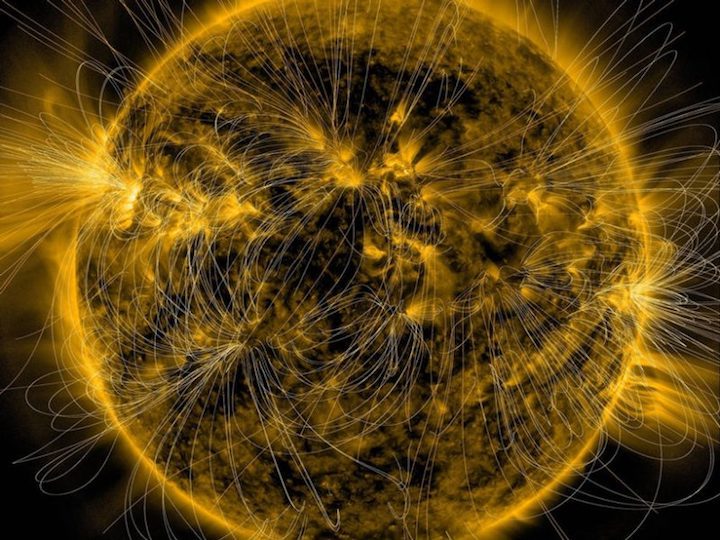7.04.2018
New research shows that solar radiation levels are growing 10% faster than previously believed and that the radiation environment in space will worsen with time.

The Sun’s magnetic activity oscillates on a roughly 11-year cycle, but lately, our star has been pretty magnetically mellow. After an average peak in 2001, magnetic activity from the Sun declined during the longest solar minimum period in the last 80 years, bottoming out around 2009. The following “minipeak” in 2014 was far smaller than average, and the Sun’s magnetic activity is again in a declining phase expected to last until around 2020.
Although lower magnetic activity from the Sun is generally associated with fewer and less severe space weather events, another threat can emerge when the Sun goes quiet: cosmic rays zipping through the galaxy. Periods of lower solar magnetic activity can still pose a high risk for space exploration as cosmic rays can move more freely through the solar system with less magnetic interference from the Sun. Over this latest period of anomalously low magnetic field strength, the Cosmic Ray Telescope for the Effects of Radiation (CRaTER) on the Lunar Reconnaissance Orbiter (LRO) gave Schwadron et al. a chance to measure solar radiation directly.
Prior to the recent analysis of CRaTER data, studies in 2014 showed that the radiation environment between Earth and the Sun was worsening over time and that an unshielded astronaut could be exposed to as much as 20% more doses of radiation each passing cycle. The new results indicate that the radiation environment is even worse than predicted—by about 10%.
The scientists suggest that most of the extra radiation exposure comes from low-energy cosmic ray particles. Although lower-energy particles are easier to shield against, the scientists still suggest the extra 10% may impose limits on space exploration in the future.
In the course of evaluating the radiation environment, CRaTER also got a chance to observe one of the largest solar energetic particle events of the last solar cycle, which occurred in September 2017. The authors’ data suggest that a series of magnetically well connected coronal mass ejections is responsible for the uptick in radiation. As the future of space exploration progresses, understanding events like these and the risks that the worsening radiation environment pose to both crew and spacecraft will become increasingly important. (Space Weather, https://doi.org/10.1002/2017SW001803, 2018)
Quelle: Eos
